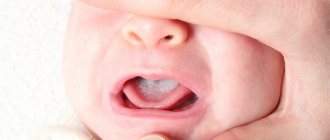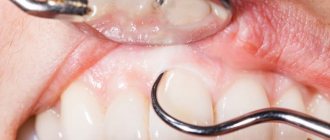Home | About us | Delivery | Advertisers | Login | Registration
- Medicines
- dietary supplementsVitamins
- Categories from A to Z
- Brands from A to Z
- Products from A to Z
- Medical equipment
- beauty
- Child
- Care
- Honey products appointments
- Herbs and herbal teas
- Medical nutrition
- Journey
- Making medicinesStock
Pharmacy online is the best pharmacy in Almaty, delivering medicines to Almaty. An online pharmacy or online pharmacy provides the following types of services: delivery of medicines, medicines to your home. Online pharmacy Almaty or online pharmacy Almaty delivers medicines to your home, as well as home delivery of medicines in Almaty.
my basket
Apteka84.kz is an online pharmacy that offers its customers medicines, medicinal and decorative cosmetics, dietary supplements, vitamins, baby food, intimate products for adults, medical equipment and thousands of other medical and cosmetic products at low prices. All data presented on the Apteka84.kz website is for informational purposes only and is not a substitute for professional medical care. Apteka84.kz strongly recommends that you carefully read the instructions for use contained in each package of medicines and other products. If you currently have any symptoms of the disease, you should seek help from a doctor. You should always tell your doctor or pharmacist about all the medicines you take. If you feel you need further help, please consult your local pharmacist or contact our GP online or by telephone.
© 2021 Pharmacy 84.
Fluconazole in the treatment of candidiasis
IN
In recent years, the prevalence of fungal diseases has increased significantly, which is associated with the widespread and not always rational use of antibiotics, cytostatics, corticosteroid hormones, an increase in the frequency of nosocomial infections, and the development of immunodeficiency states.
The most common candidiasis in clinical practice is caused by the yeast-like fungus Candida albicans.
. The development of candidiasis is promoted by both local and systemic factors. For example, with skin candidiasis, the presence of maceration, diaper rash, and paronychia is of great importance. Most often, candidiasis occurs in patients with diabetes mellitus, HIV infection, hematological malignancies, as well as with long-term and uncontrolled use of antibiotics and corticosteroid hormones.
Clinical manifestations
candidiasis is characterized by damage to the mucous membranes of the oral cavity (stomatitis), esophagus (esophagitis), urogenital tract, skin and nails. The most severe manifestations are caused by hematogenous dissemination (endocarditis, meningitis, arthritis, osteomyelitis, brain abscess).
Skin lesions with candidiasis are characterized by the appearance of vesicles and pustules, which quickly open and erosion forms in their place. The lesions are dark red in color, shiny, with a moist surface, clear boundaries and a strip of exfoliating stratum corneum of the epidermis. In children, the process can spread to the skin of the thighs, buttocks, and abdomen. The appearance of interdigital candidiasis erosion is often observed, most often between the III and IV IV and V fingers of the hands, less often of the feet. Subjective sensations include itching, burning, and sometimes pain in the affected area.
Candidiasis of the oral mucosa is characterized by damage to the mucous membranes of the cheeks, tongue, gums, and corners of the mouth. The process begins with redness of the mucous membrane, then white deposits appear, merging to form large films. At first, the films separate easily, then become dense. Cracks with pronounced maceration form in the corners of the mouth, and there is a burning sensation and pain when eating.
Candidiasis of the nail folds and nails begins with redness and swelling of the fold at the base of the nail, which swells and when pressed, pus or ichor is released. When a fungal infection penetrates the nail plate, it becomes yellowish and dull.
Urogenital candidiasis can occur in acute or chronic form. The acute form is characterized by redness of the mucous membrane, the presence of blisters, pinpoint erosions and the presence of cheesy or flaky, creamy discharge. The affected mucosa tends to bleed and develop cracks in the area of the vaginal vestibule and perineum. Itching is characteristic of candidiasis of the vulva, labia majora and minora, and intensifies during menstruation, sexual intercourse and prolonged walking. Chronic urogenital candidiasis is characterized by infiltration and cracks in the area of the clitoris, anus, perineum and inguinal folds. Candidiasis of the urinary organs occurs in the form of urethritis, cystitis, and pyelonephritis. Candidal cystitis is characterized by frequent urination and pain in the suprapubic region. With urethritis, mucopurulent discharge of white or yellow color appears, mainly in the morning. Itching and burning intensify when urinating.
Candidal balanoposthitis is manifested by redness, swelling of the glans penis, itching and burning when urinating. Yellowish films and a loose cheesy mass form on the contacting surfaces of the head and foreskin.
With candidiasis of the digestive tract, damage to the esophagus, stomach, intestines and gallbladder develops, which is associated with the spread of infection from the mouth and pharynx. Patients complain of nausea, belching, vomiting, loose stools mixed with mucus, and abdominal pain. The mucous membrane is hyperemic, eroded, covered with multiple white or yellow deposits.
Candidiasis of the central nervous system occurs as meningitis and develops as a result of hematogenous dissemination of the infection. There are no specific clinical manifestations; fungal infection is often confirmed only at autopsy.
Hematogenous dissemination of fungal infection C. albicans
accompanied by fever, toxic and focal manifestations (retinal abscess, endocardial candidiasis, arthritis, meningitis, pneumonia).
Candidal sepsis develops when the mucous membrane of the oral cavity and esophagus is damaged in young children and in patients with diabetes mellitus and HIV infection. The clinical picture is dominated by symptoms of intoxication, sudden rises and falls in temperature, and a decrease in blood pressure.
Diagnosis of candidiasis
based on clinical manifestations (itching, burning, plaque, swelling of the mucous membranes, hyperemia and others), microbiological tests (
in vitro
, histology and detection of specific antigens in the immunofluorescence reaction with monoclonal antibodies against
C. albicans
, detection of specific antibodies by enzyme immunoassay).
For the treatment of candidiasis
use antimycotic drugs of systemic action (polyene antimycotics, triazole derivatives, pyrimidine derivatives and allylamines).
Among triazole derivatives, the leading place is occupied by fluconazole (Mikosist)
, which is a selective inhibitor of sterol synthesis in the fungal cell.
Fluconazole is highly active against C. albicans
: Only about 3-5% of
C. albicans
are resistant to fluconazole or have intermediate sensitivity.
Candida krusei
and certain strains
of Candida glabrata
are resistant to fluconazole.
After oral administration of fluconazole, more than 90% of the drug enters the systemic circulation. It penetrates perfectly into saliva, sputum, urine and other tissue fluids. Fluconazole is excreted primarily in the urine unchanged. The half-life with normal renal function is 27-34 hours. Mikosist (fluconazole) is available in two forms - for intravenous and oral administration, the oral form has very good bioavailability.
Fluconazole is the drug of choice for candidiasis of the urinary tract, esophagitis, peritonitis, wound infection, and is used in the treatment of febrile neutropenia. For urogenital candidiasis, fluconazole is prescribed in a dose of 50 to 200 mg per day for 7-28 days. For candidal esophagitis, a dose of 400 mg is recommended, followed by a reduction to 200 mg.
Fluconazole is considered the drug of choice in the systemic treatment of oral candidiasis. For oropharyngeal candidiasis, fluconazole is prescribed to adults at a dose of 100 mg once a day for 7-14 days. For atrophic candidiasis of the oral cavity, it is preferable to prescribe fluconazole at a dose of 50 mg per day for 14 days. When C. albicans
the dose of fluconazole is increased to 400–800 mg/day. With frequent relapses, it is possible to prescribe pulse therapy with fluconazole (150 mg once a week). Intermittent circuits help prevent the development of resistance.
For cutaneous candidiasis, the effective dose of fluconazole ranges from 50 to 100 mg per day for 14-28 days. For candidiasis of the skin of the feet, we recommend a dose of 150 mg per day for 14-28 days.
The choice of treatment for candida paronychia depends on the stage of the process, the severity of inflammation, the presence of candidiasis of the skin or mucous membranes, and onychomycosis. Fluconazole is prescribed for concomitant onychomycosis, a combination of paronychia with candidiasis of the skin or mucous membranes. In these cases, local therapy alone does not guarantee cure and elimination of the pathogen. Fluconazole is prescribed 150 mg once a week for 2–6 weeks. Systemic therapy can be combined with treatment with local antiseptics or antifungals.
To prevent candidiasis during antibiotic therapy, the dose of fluconazole is from 50 to 300 mg per day once, depending on the risk of developing a fungal infection.
In children, the daily dose is 3 mg/kg body weight per day. On the first day, it is advisable to prescribe a loading dose of 6 mg/kg per day. The duration of therapy in children ranges from 1 to 14 days, depending on the severity of the candidiasis infection.
Fluconazole is well tolerated, adverse reactions occur mainly from the gastrointestinal tract (abdominal pain, nausea, flatulence), headache and skin rashes are less common.
Treatment of candidal stomatitis in adults
How to treat the disease “candidal stomatitis”?
First of all, at the first signs of the appearance of red sores, it is necessary to contact a specialist who must correctly diagnose the disease and prescribe treatment. Quick and timely diagnosis is the key to successfully overcoming the disease and eliminating discomfort.
Most often, in the treatment of candidal stomatitis, drugs from the group of antifungal agents are prescribed. Depending on the stage and form of the disease, they are taken 4-7 times a day until any signs of thrush completely disappear. Be sure to consult your doctor before using any medications!
Also during treatment it is necessary to use local antifungal agents, such as:
- A solution of baking soda in water (a teaspoon per glass of water). For better dissolution, the water should be warmed up a little.
- Drops with nystatin.
- Lotions with potassium permanganate. Potassium permanganate dissolves at a rate of 1 to 10,000.
- Asepta rinse solution. It contains an anesthetic component that relieves discomfort. The rinse aid is convenient because it does not require preparation and is immediately ready for use. You can take it with you to work and periodically rinse your mouth with it throughout the day. The solution has an excellent disinfectant effect and relieves burning sensation.
What causes the development of the disease?
Before you begin treatment for candidal stomatitis, you need to know what affects its appearance. This will help you better understand what to avoid to prevent illness.
So, the main reasons:
- Weakened immunity that does not fully suppress the growth of the fungus.
- Any allergy (the appearance of which can also be influenced by a weakened immune system).
- Long-term use of medications that cause dysbacteriosis.
- Dehydration due to severe diarrhea.
- Lack of vitamins, especially vitamins A, B, C, E.
- Hormonal changes in the body (for example, during pregnancy in a woman) or other problems with hormonal levels.
- Oral health problems: diseases of the gums and teeth (gingivitis, caries, tartar).
- Toothpastes containing sodium lauryl sulfate, which is designed to clean the oral cavity and freshen breath, but leads to dehydration and the rapid development of stomatitis.
- Long stressful loads.
- Hereditary predisposition to diseases of the oral cavity often requires almost constant treatment of candidal stomatitis.
- Long-term chemotherapy associated with malignant neoplasms, which also weakens the immune system.
Due to one or more of the above factors, a favorable environment is created for the proliferation of fungi of the genus Candida.
There is also a systemic cause of candidal stomatitis, which requires treatment from several medical specialists at once - this is thrush affecting the entire body or its occurrence on the vaginal mucosa of a woman.
A child becomes infected with a fungus of the genus Candida as a result of passage through the birth canal or due to non-compliance with hygiene standards.






